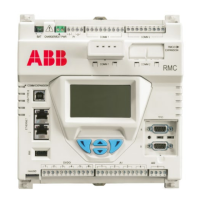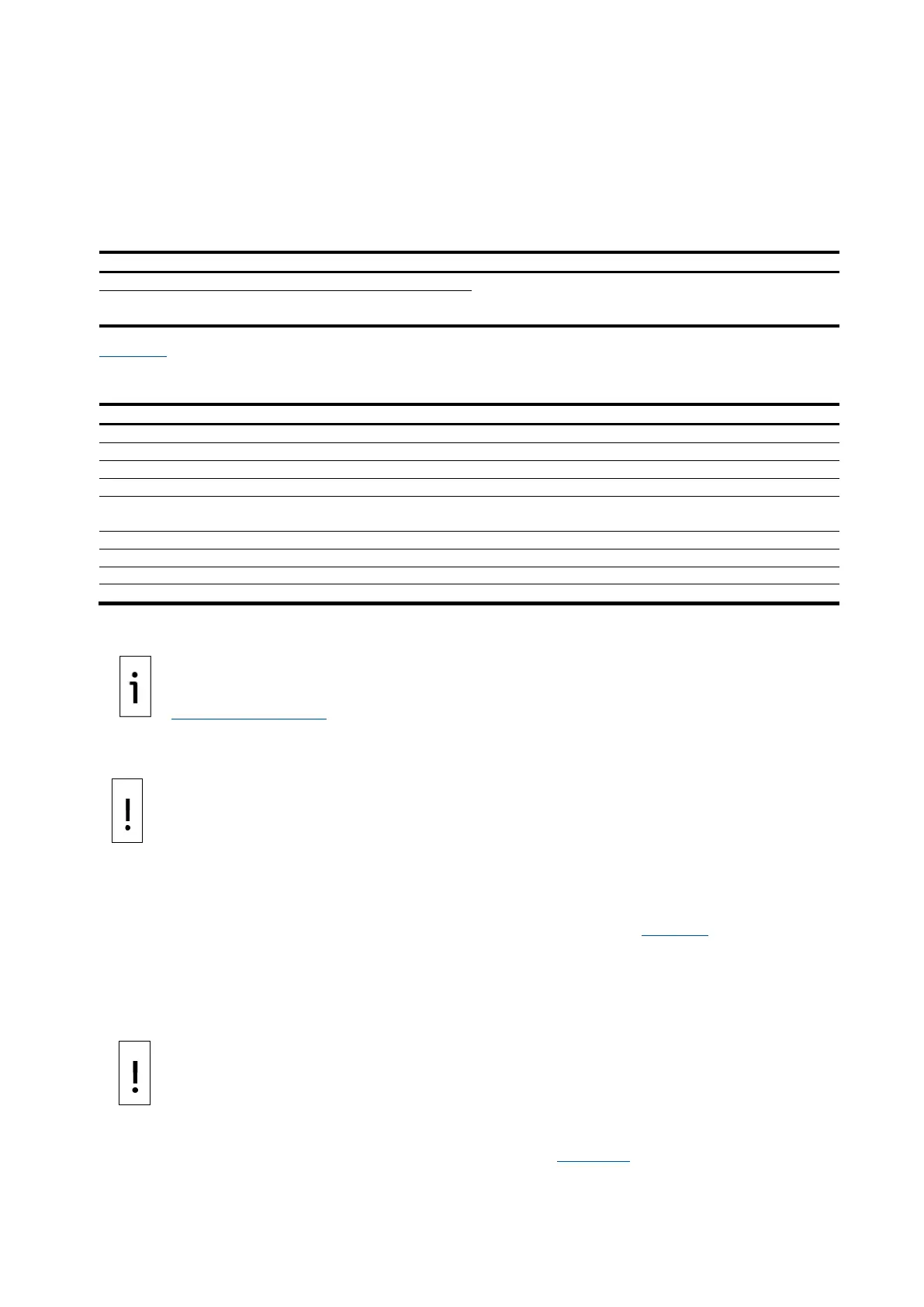2105552MNAE | RMC-100 | 33
3.5.4 Wire serial communication ports
Wire the RMC serial communication (serial communication, COMM) ports to communicate with and
power external devices. The type of serial interface the external device requires determines the wiring
for communication. Wire for power if there is no external supply powering the external device.
This section provides wire length specifications per serial interface type, port pinouts and generic
instructions for field wiring. There are also two scenarios of serial communication.
Table 3-1: Serial communications specifications
Terminal connector (9 POS), screw termination
and pluggable COMM module
Active when communication module is inserted
Table 3-2 identifies the RS-232, RS-422, and RS-485 communication pinouts for COMM 1 and COMM
2.
Table 3-2: COMM 1 and COMM 2 serial communication port pinouts
Switched voltage (Sw VOUT)
Switched voltage (Sw VOUT)
Switched voltage (Sw VOUT)
5
Remote request to send
(RRTS)
Remote request to send
(RRTS)
Remote request to send
(RRTS)
To wire the serial communication port:
RMC user drawings display COMM wiring details for specific external devices.
information section.
– Equipment damage. Pin 1 (VOUT) or pin 3 (Sw VOUT) can power an external
device on both COMM1 and COMM2. The external power supply connected to the
CHARGER/EXT PWR port determines the output voltage at these pins.
Verify that the device is compatible with the input voltage at the CHARGER/EXT PWR por
t
before connecting to these pins. Connection to an incompatible device can result in damage
to the device.
1. Pry the terminal connector off the electronic board with a slotted screwdriver.
2. Trim the wire covering back ¼ inch (0.635 cm) on each wire.
3. Loosen the terminal connector screws for the correct pin according to Table 3-2
COMM 1 and
COMM 2 serial communication port pinouts.
4. Insert the wires into the required pins if you power the device from the COMM port:
• Use pin 1 (VOUT) and pin 2 (GND) to provide constant voltage.
• Use pin 3 (Sw VOUT) and pin 2 (GND) to provide switched voltage
5. Tighten the terminal connector screws.
– Equipment damage. Do not overtighten the terminal connector screws. This
6. Insert the terminal connector back onto the COMM port if it was removed.
7. Insert the communication module in the appropriate slot (Figure 3-3
). The communication
module pushes the port cover downward when inserted.

